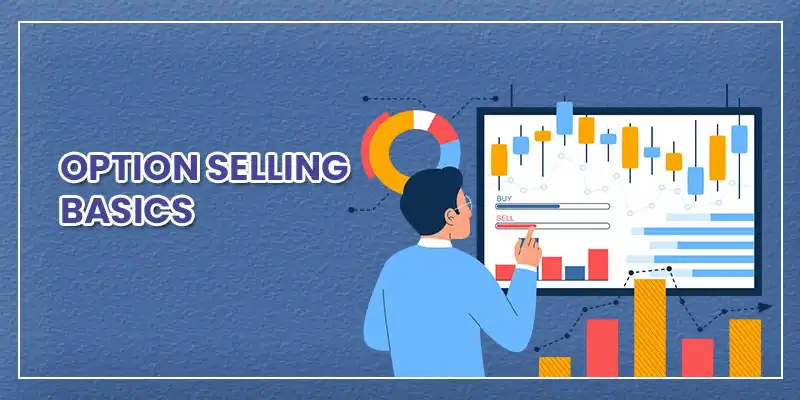Option selling involves writing (selling) option contracts and collecting premiums in exchange for taking on obligations. This article explains the core concepts, mechanics, and considerations without promoting any specific strategies or outcomes. Investors must note that while option selling may offer premium income, it also involves significant risks, including margin requirements and potential unlimited losses.
Contents
- What is Option Selling?
- Mechanics of Option Selling
- Potential Advantages
- Potential Considerations
- Risk Management in Option Selling
- Conclusion
- FAQs
What is Option Selling?
Option selling refers to the practice of writing call or put option contracts. When an option is sold, the seller receives a premium in exchange for taking on the obligation to buy or sell the underlying asset if the option buyer exercises the contract. This practice may result in premium receipts but comes with an obligation to fulfill the contract if exercised.
Risk Disclaimer: Trading options involves risk, and traders must meet obligations as per the contract terms.
Read Also: Understanding Index Options Trading in India
Mechanics of Option Selling
The process begins when an investor writes an options contract, specifying the underlying asset, strike price, and expiration date. In return for the premium, the seller takes on potential responsibilities:
- Call Options: If the option buyer exercises a call option, the seller must deliver the underlying asset at the strike price.
- Put Options: For a put option, the seller may need to purchase the underlying asset at the strike price.
These contracts are standardized, which provides clarity on the terms. The option seller’s potential outcomes depend on the market movement of the underlying asset. If the market does not move favorably for the buyer, the option may expire worthless, allowing the seller to retain the premium as income. However, market unpredictability means outcomes vary widely, and sellers may face losses that exceed the received premium.
Risk Disclaimer: Obligations under options contracts require careful consideration of market movements.
Potential Advantages
Option selling can offer certain advantages:
- Potential Premium Receipts: The seller may collect a premium to assume obligations under the contract.
- Potential Time Decay Advantage: The seller may benefit if the option loses value due to time decay, provided the market remains stable.
- Flexibility: Different option strategies can be combined to tailor exposures based on market views.
Each advantage is balanced by the responsibility of meeting the option’s terms, and participants should understand that outcomes vary with market conditions.
Potential Considerations
There are several considerations to keep in mind:
- Obligation to Fulfill Contracts: Sellers are contractually obligated to buy or sell if the option is exercised, which may result in unexpected losses if not adequately hedged.
- Margin Requirements: Brokers typically require a margin to cover potential obligations. It ensures that sellers can meet contract terms.
- Limited Profit Potential: While the premium provides income, the profit is capped by the premium received, regardless of how much the underlying asset moves.
Risk Disclaimer: Before entering any option selling transaction, review margin requirements and understand that profit potential is limited to the premium.
Risk Management in Option Selling
Option selling is a high-risk strategy that is not suitable for all investors. Risk management cannot eliminate losses, but it may help mitigate exposure in certain scenarios. Risk management is crucial when engaging in option selling. A seller should assess the potential outcomes and prepare for scenarios where the market moves in a less favorable direction. Standard risk management techniques include:
- Position Sizing: Limiting the size of positions to avoid excessive exposure.
- Hedging: Using complementary positions (e.g., buying a call/put) to offset adverse price movements partially. However, hedging does not guarantee risk elimination.
- Monitoring Market Conditions: Regularly evaluating market trends and underlying asset performance is essential.
These measures are part of a disciplined approach to trading options. A systematic review of positions helps maintain awareness of potential exposures and ensures that obligations under contracts are managed appropriately.
Risk Disclaimer: Effective risk management practices are essential; however, they do not eliminate all risks involved in option selling.
Read Also: The Impact Of AI On Options Market Analysis
Conclusion
Traders considering option selling must evaluate all obligations, understand margin implications, and apply rigorous risk controls. This strategy is complex and typically suited to experienced investors familiar with market dynamics and derivatives.
Disclaimer: Investment in the securities market is subject to market risks. Please read all scheme-related documents carefully before investing. The information provided in this article is for educational and informational purposes only and is not intended as investment advice. Trading in derivatives, including options, involves substantial risk and is not suitable for all investors. Past performance is not indicative of future results. Readers are advised to consult with their financial advisors before making any trading decisions.
FAQs
Margin requirements vary significantly across brokers and are based on underlying asset volatility, option premiums, and regulatory rules. Verify with your broker for additional details.
Tax implications depend on jurisdiction, holding period, and transaction frequency. For clarity, consult a tax professional for personalized guidance regarding potential tax liabilities and deductions.
Low liquidity can lead to wider bid-ask spreads and potential slippage, especially for naked positions. Always assess volume and open interest before execution

